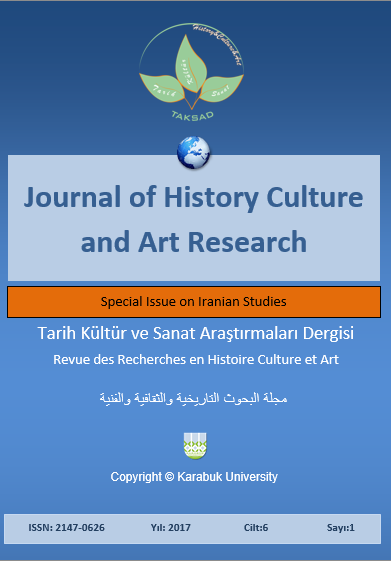Iran Penal Law on Sacrilege in the Name of Freedom of Expression
DOI:
https://doi.org/10.7596/taksad.v6i1.790Keywords:
Freedom of Expression, Insolence, Sacrilege, Press.Abstract
Freedom of expression is a fundamental human right that is closely related with social progress and human sublimation. However, it is among the rights which are of an optional nature besides being a social right. Thus, based on the above-mentioned characteristics, its full implementation is encountered with a number of limitations and conditions including observation of the rights of one's fellowmen, prohibition of trespassing against one's honor or social order and so on and so forth. Sacrilege is one of the most indecent offending behaviors that have been described as a crime in Iran’s penal code of law. This crime is of public effect and is counted among religious crimes and it has been considered as a crime in support of religion as one of the most important values governing the societies. Sacrilege is one of those crimes which are seriously prosecuted by religious states whose beliefs are insulted. This tough stance has its origin also in the fact that man by his nature does not tolerate a certain set of actions including the act of treating a one's sacred beliefs without respect. As a result, this crime is seriously punished by religiously oriented governments. Since Iran is a religious state, if someone insults the religious and Islamic beliefs the government shall sue him. Various aspects of sacrilege as a crime, the boundaries of freedom of expression and the assessment of press law in the light of freedom of expression are among the issues which have been dealt with in present article.
References
Amini, Naser (2003). Freedom of Expression. Resalat Newspaper.
Eslami, Morteza (1994). Freedom of the Press and the Criminal Law. The Journal of the Justice Department Bar Association. Nos. 8-9, New Issuance.
Feyz, Ali Reza (1990). Simultaneity and Comparison in Islam’s General Criminal Law. The Ministry of Culture and Islamic Guidance.
Heydari (2001). The Principles of Deduction. Translation and Exposition by Abbas Zera’at and Hamid Masjed Sora’ee, Feyz.
Horr Ameli, Sheikh Muhammad Ben Hassan (1980). Vasayel al-Shi’a. Islamic School Publication.
Mill, John Stewart (1970). A Treatise on Freedom. Tr. Javad Sheikh Al-Eslami, The Institution of Book Translation and Publication.
Mir Muhammad Sadeghi & Seyyed Hussein (2003). Private Penal Law, Crimes Against the Public Security and Welfare. Mizan.
Montesquieu, Charles (1976). The Spirit of the Regulations. Tr. Ali Akbar Mohtadi, Amir Kabir Publication Institute.
Najafi Abrand Abadi, Ali Hussein (1995-1996). The History of Shahid Beheshti University Penal Law History.
Najafi, Sheikh Muhammad Hassan (1983). Discourse Gems in Explication of the Islamic Canonical Rules, Islamic School House.
Noorbaha, Reza (2000). The General Criminal Law Background, Mizan.
Radmand, Davud (2000). The Underlying Foundation of Freedom of Expression and Ideas Legitimacy in Islamic Teachings, Leaflet of Entekhab.
Rah Chamani, Muhammad Reza (2004). Freedom of Expression is a Natural Human Right. Asrar.
Shari’ati, Ali (n.d.). The History of the Religions. No Place.
Spencer, J. R. (2004). The Penal Trial Procedure in England. Tr. Muhammad Reza Goudarzi, Jangal.
Tabataba’ei Motmeni, Manuchehr (2003). General Freedoms and the Human Right, Tehran: University Publication.
Yazdi, Muhammad (1996). The Constitution for Everyone. Amir Kabir Publication Institute.
Zera’at, Abbas (1998). An Explication on the Islamic Penal Law, Feyz.
Zera’at, Abbas (2002). The Survey of the Crime of Breaching the Religious Sanctities of Islam, The Journal of Law and Political Sciences Department. Kashan University, No. 56.
Downloads
Published
How to Cite
Issue
Section
License
All papers licensed under Creative Commons 4.0 CC-BY.- Share — copy and redistribute the material in any medium or format
- Adapt — remix, transform, and build upon the material for any purpose, even commercially.
Under the following terms:
Attribution — You must give appropriate credit, provide a link to the license, and indicate if changes were made. You may do so in any reasonable manner, but not in any way that suggests the licensor endorses you or your use.
- No additional restrictions — You may not apply legal terms or technological measures that legally restrict others from doing anything the license permits.







